If you’re looking to make your own non-toxic cleaning products then this is a fun laundry liquid recipe to try this autumn. At the time of writing this article we have already switched to using the Ezone Soap Nuts. I’ve been really impressed with soap nuts as they are effective, economical and of course, way better for the environment. It seemed like creating our own natural laundry liquid was the next step. Here’s a look at how to make laundry liquid from conkers and a little more about soap nuts for those of you who are wondering what the heck I’m talking about…
What Are Soap Nuts?
I’m sure some of you are reading thinking, what on earth are soap nuts? I figured I should explain what those are first.
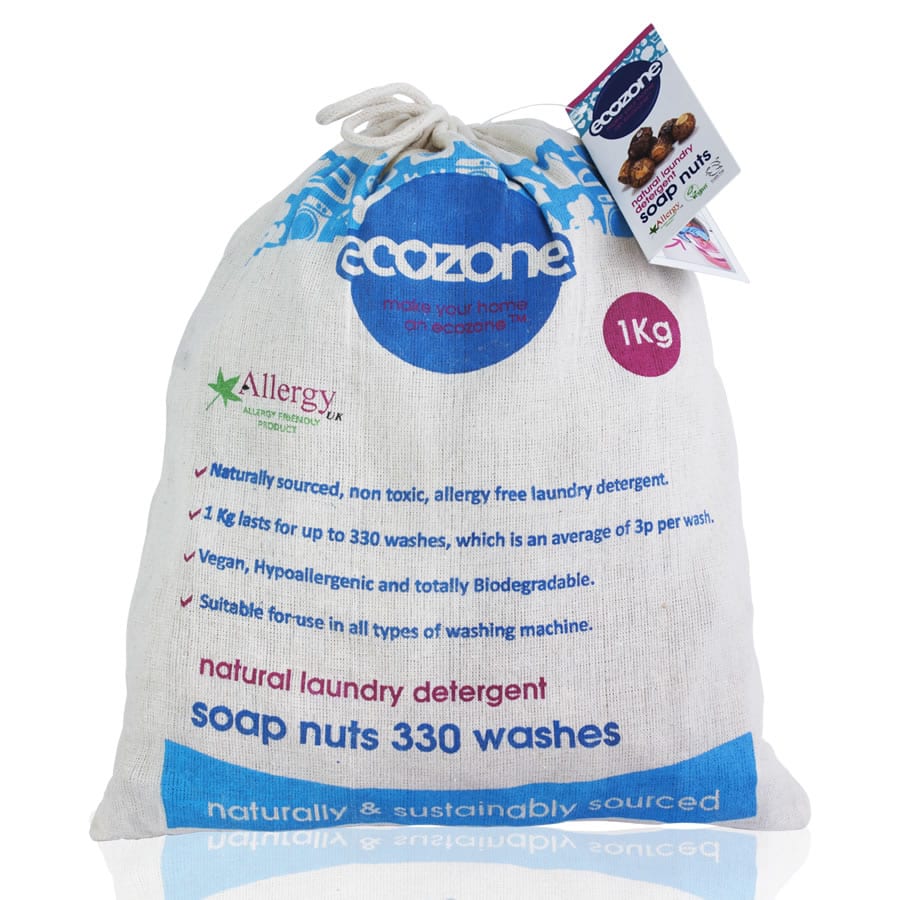
Soap Nuts look like brown dried nut shells. The shells contain saponins, saponins are a compound found in plants with antimicrobial properties and they lather when wet. It’s the saponins that wash your clothes, they are what create the soapy froth you see when you wash your hands with a bar of soap. I’d say if you’re just starting to explore non-toxic, natural alternatives for your laundry then soap nuts are a great place to start.
Buy: Ecozone Soap Nuts
However, if you’re looking to get a little more adventurous, then let’s take a look at the pros and cons of creating laundry liquid from conkers.
Why Wash Your Laundry With Conkers?
They wash your laundry brilliantly. Don’t get me wrong, soap nuts do wash your clothes really well, but conkers seem to be more effective. Anything which requires a gentle wash, like silk I’d recommend washing with the small batch of soap nuts. If you have some truly messy, sweaty clothes, conkers are certainly much better.
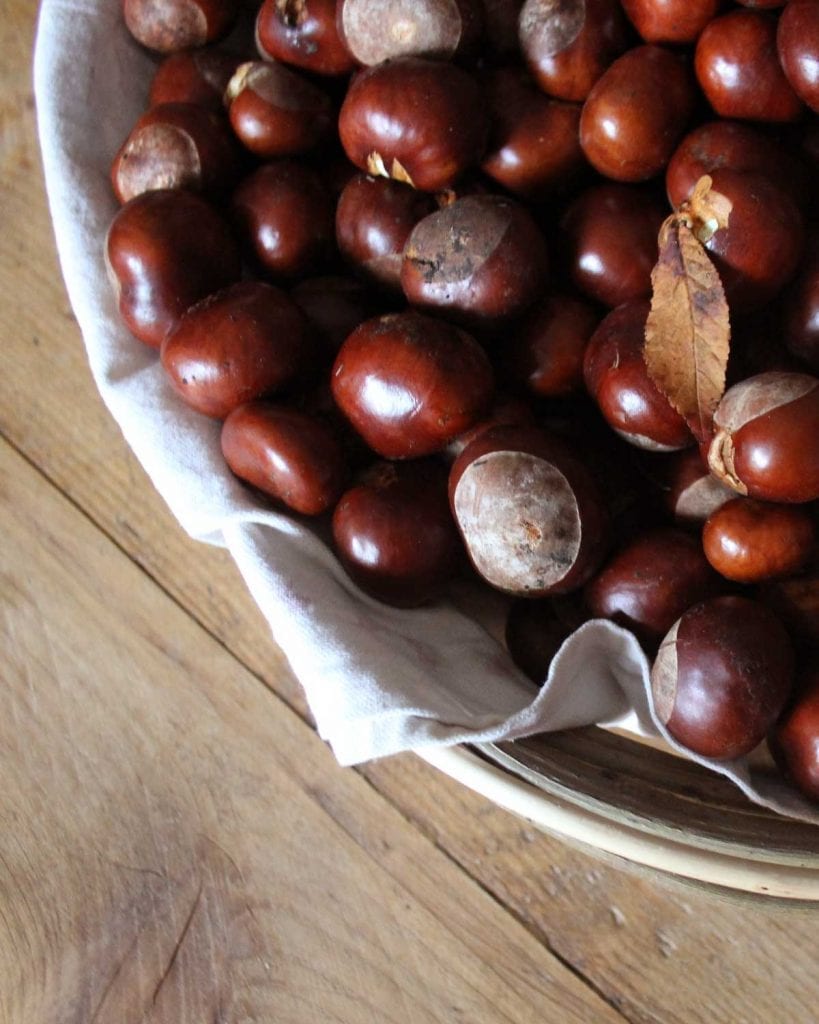
You can get have fun picking them locally. Making Laundry Liquid from conkers is obviously not a time-saving exercise. Gathering your conkers is fun and an activity to be enjoyed. You can collect them locally, and they’re an otherwise wasted resource, so it’s win-win.
They make whites super bright. I guess this would also be a drawback for some people as the conkers do bleach very slightly, and if you’re a person who hates washed out black clothes, then maybe conkers aren’t for you. But as someone who wears white linen shirts a lot, this is a real selling point for me.
Your clothes smell better. If you’ve already used them then you will know that with soap nuts you have to be very careful to let them dry out between washes. Since you can re-use them about 3 to 4 times, you need dry them out or your washing will start to get this stale, almost moldy smell. Conkers are only one use per batch.
The Conker Laundry Liquid Recipe
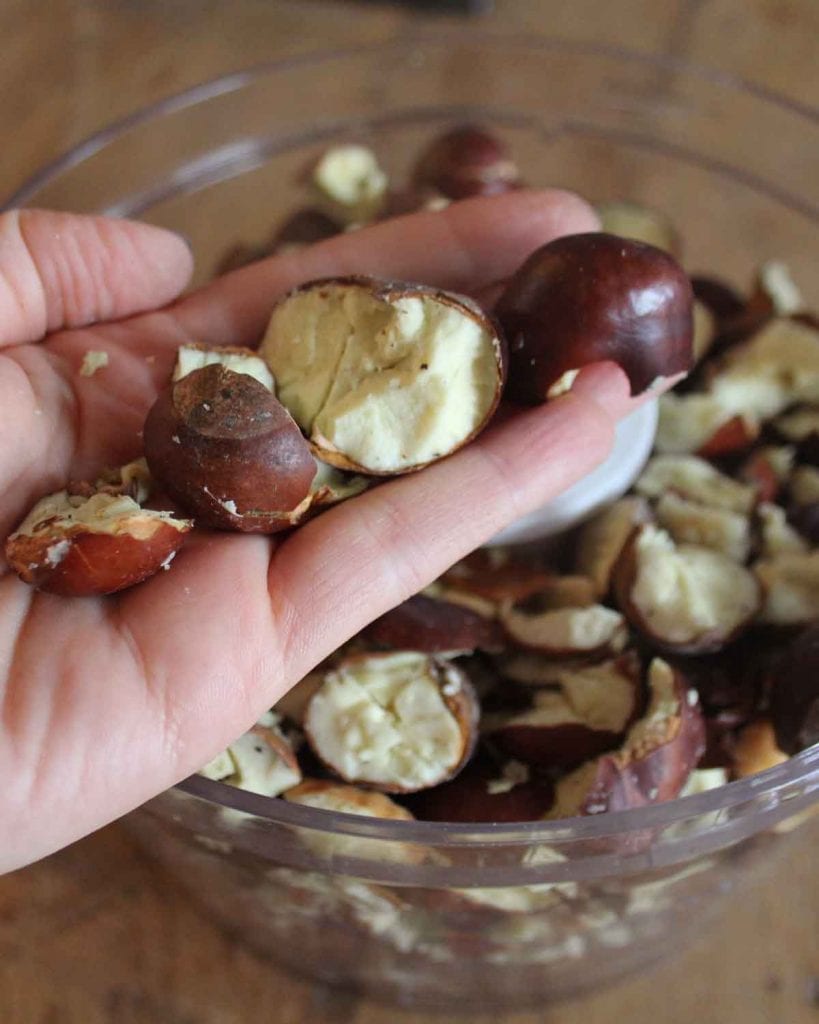
Gather your conkers:
The first thing you need to do is pack a bag and head out to the woods. Gather up lots of conkers (horse chestnuts) and bring them home.
How many do you need?
I’d say approximately 200 conkers will last you for around 4-5 months of washing (based on our household of 2 adults).
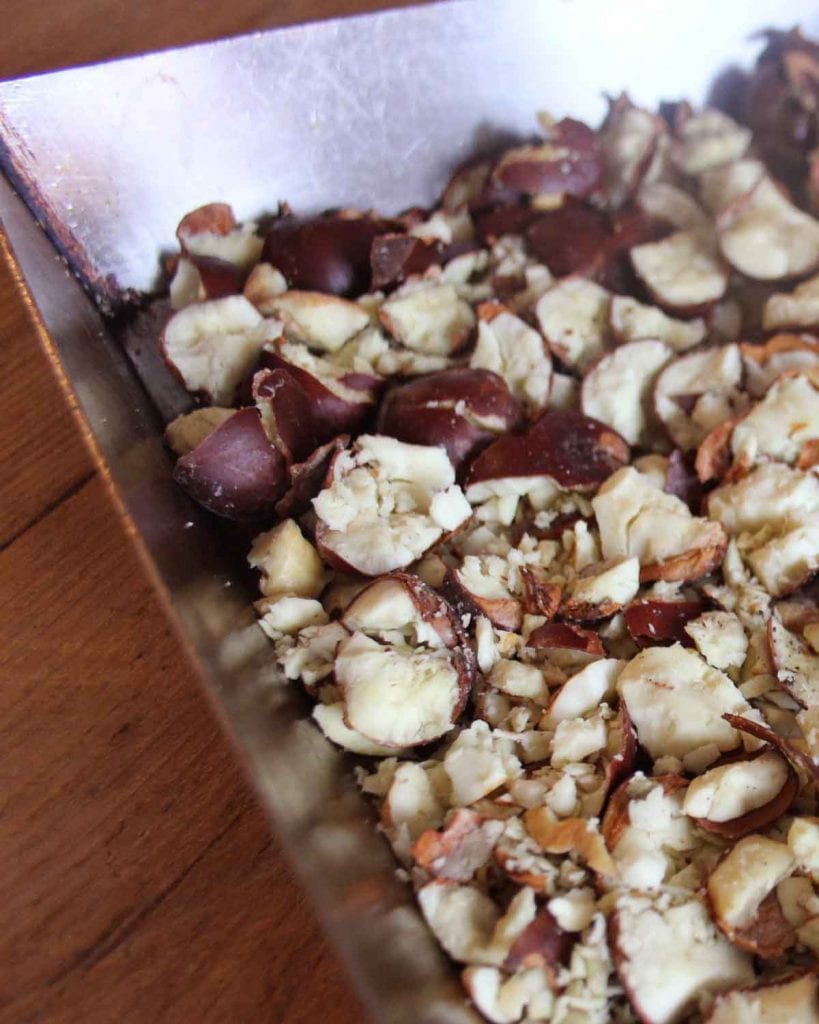
Smash up your conkers:
I used a tea towel and a hammer and a hammer to smash up the conkers to be as shown in this image. This is by far the toughest part of the process. It is better to grind them up into smaller crumbs (like a cookie mix) to speed up the process when it comes to soaking.
Dehydrate the conkers:
Place your crumbs into a tray and cook on a very low heat, until they smell like cookies. Alternatively, if you have a dehydrator, stick with using that.
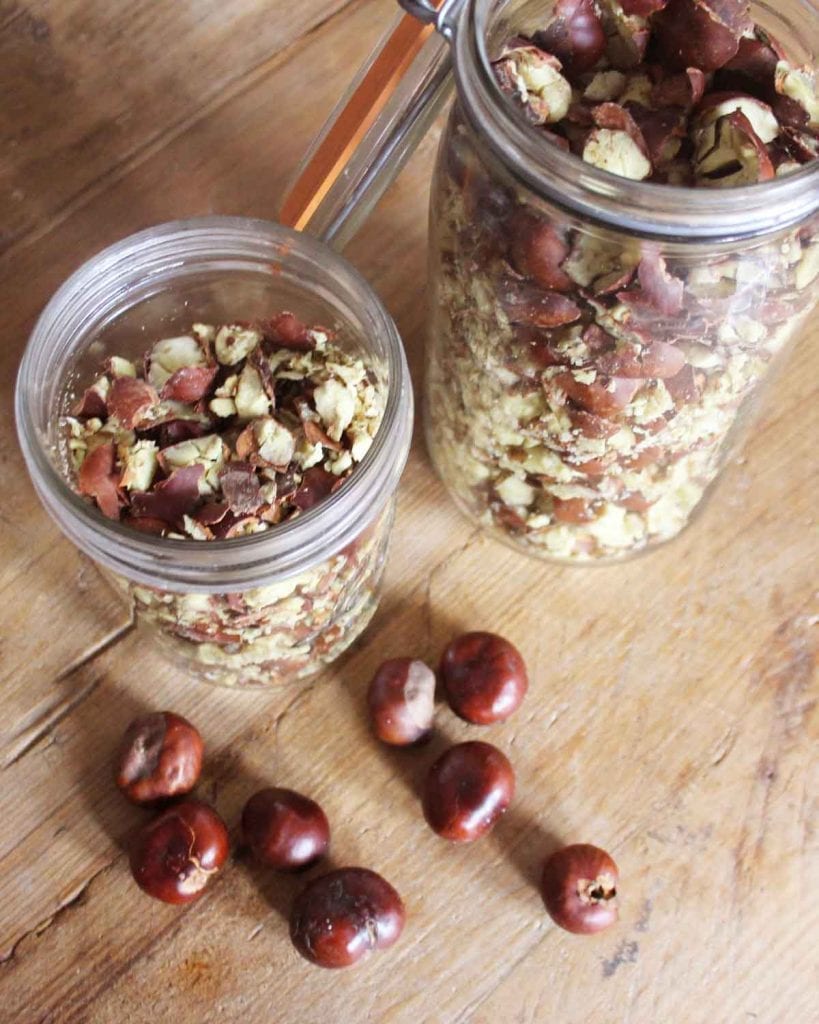
Store conkers somewhere nice and dry.
Once you have your dehydrated conkers, keep them in a jar or air tight container until you need to use them.
Soak the conkers before using.
Use approx 1/2- 1 cup of conkers per wash. You need to add water and let them soak overnight before using. I found that making up a larger batch worked better, that way it is ready for the week or so ahead. Always make sure you sieve your mix and only add the liquid to your washing machine drawer.
You can also add several drops of essential oils to your batch for a little added fragrance. Around 5-10 drops of tea tree oil with each jug of laundry seems to work well. Lavender also smells lovely.
Again, I would say that this is certainly a time-consuming process compared to buying Soap Nuts, but it works really well. The whole thing is free, totally sustainable and would make a fun activity to try with children.
Christine




